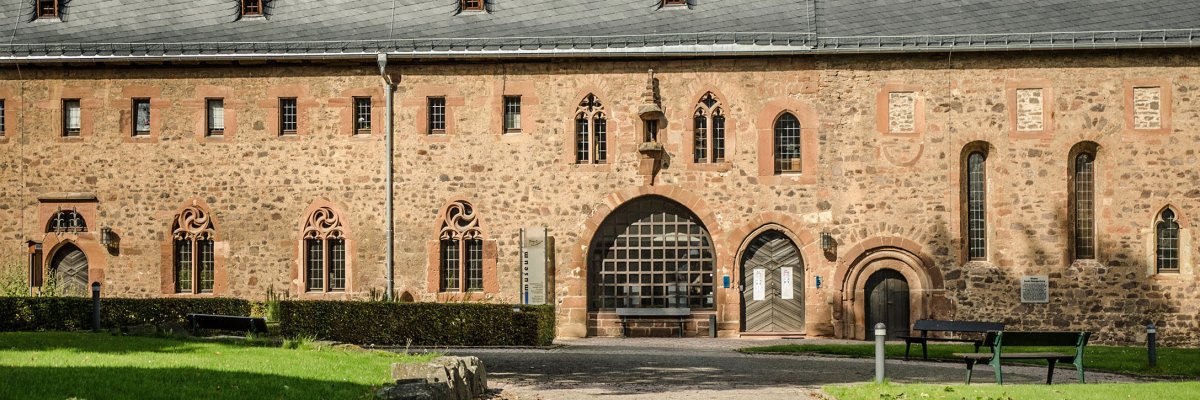Cistercian Monastery St. Georgenberg
Cistercian Monastery St. Georgenberg
The historic Cistercian convent of St. Georgenberg in Frankenberg now houses one of the administrative offices of the Waldeck-Frankenberg district. The historic building in the middle of the Philipp Soldan town of Frankenberg also houses the historic "Museum im Kloster" of the Waldeck-Frankenberg district in the north wing.
History
The foundation of the former Cistercian convent goes back to a foundation by the noble lords of Itter, who owned a domain north of Frankenberg. Their attempt to found a convent near Sachsenberg failed. With the help of the landgraves of Thuringia, the new monastery was then built at the gates of Frankenberg from 1249 and endowed with the patronage of the Frankenberg chapel.
The castle and town of Frankenberg were intended to serve as a base for the Hessian-Thuringian landgraviate and the monastery of St. Georgenberg was to help strengthen their influence in this area. This rather secular intention and the fairly close proximity to the up-and-coming town of Frankenberg meant that the monastery played a weighty role not only in the religious sphere but also in the social life of the region.Religious and lay sisters
Its inmates were divided into religious and lay sisters, most of whom came from the families of the landed gentry, from the patrician families of the surrounding towns and, in the case of lay sisters, also from lower social classes. These close kinship ties between the surrounding countryside, the nearby town and the convent inmates led to lively interactions that extended the influence of St. Georgenberg beyond the convent walls.The convent was dissolved in 1568, but the nuns - the last of whom died in 1581 - still had the right to stay.
Architecture
The two-storey, three-winged building group from the 13th to 17th centuries is well preserved and still appears as a whole today. The side open to the east has been largely closed by a modern building that houses the administrative office of the district administration with the state district office. As a result, the monastery complex is difficult to recognise from the city. The interiors have been redesigned to suit the respective purpose.
The most impressive is undoubtedly the north wing, on the east side of which is the late Romanesque former chapel of St Maurice. It is divided by intermediate ceilings. The long narrow round-arched windows date from the middle of the 13th century and give the building its special style. The rest of the north wing was built at the end of the 14th century and modified at the beginning of the 16th century. The part in which the remains of the former cloister with late Gothic tracery windows are located is remarkable.
Museum in the monastery
The "Museum im Kloster" is housed in the north wing of the former monastery. At the centre of the museum exhibits are the works of the Frankenberg artist Philipp Soldan (1500 - 1570), woodcarver, stone sculptor and master of the stove plate in the 16th century. His artistically carved beam heads, which once adorned the Liebfrauenkirche in Frankenberg, can now be found in the museum's cloister. The motifs, which show monks, owls, lions, rams' heads, virgins and masks, among other things, are very impressive and mark the transition from late Gothic to Renaissance in terms of art history. The cloister also houses works by another famous son of Frankenberg: the master builder and stone sculptor Tyle von Frankenberg (14th century). Visitors will find sandstone figures by the artist in the cloister, also from the Liebfrauenkirche, which were removed and partially mutilated (destroyed) during the iconoclasm in 1606 on the orders of the Hessian landgrave Moritz the Learned.
The extensive folklore collection contains special gems of local culture; to name but a few - the oldest blue print in Hesse, a hackle rifle with muzzle-loader from around 1400, representing the beginning of a new generation of weapons, a life-size wooden Baroque figure depicting King David with a harp, a Brützel altar from 1680, a late Gothic sacristy cupboard, the most extensive collection of stülpchen in Hesse and the war chest of a Jewish cattle trader, ca. 1700. In the dormitory, visitors will find display cases with fossils, e.g. Frankenberg corn ears, and finds from early and prehistoric times from the region.
